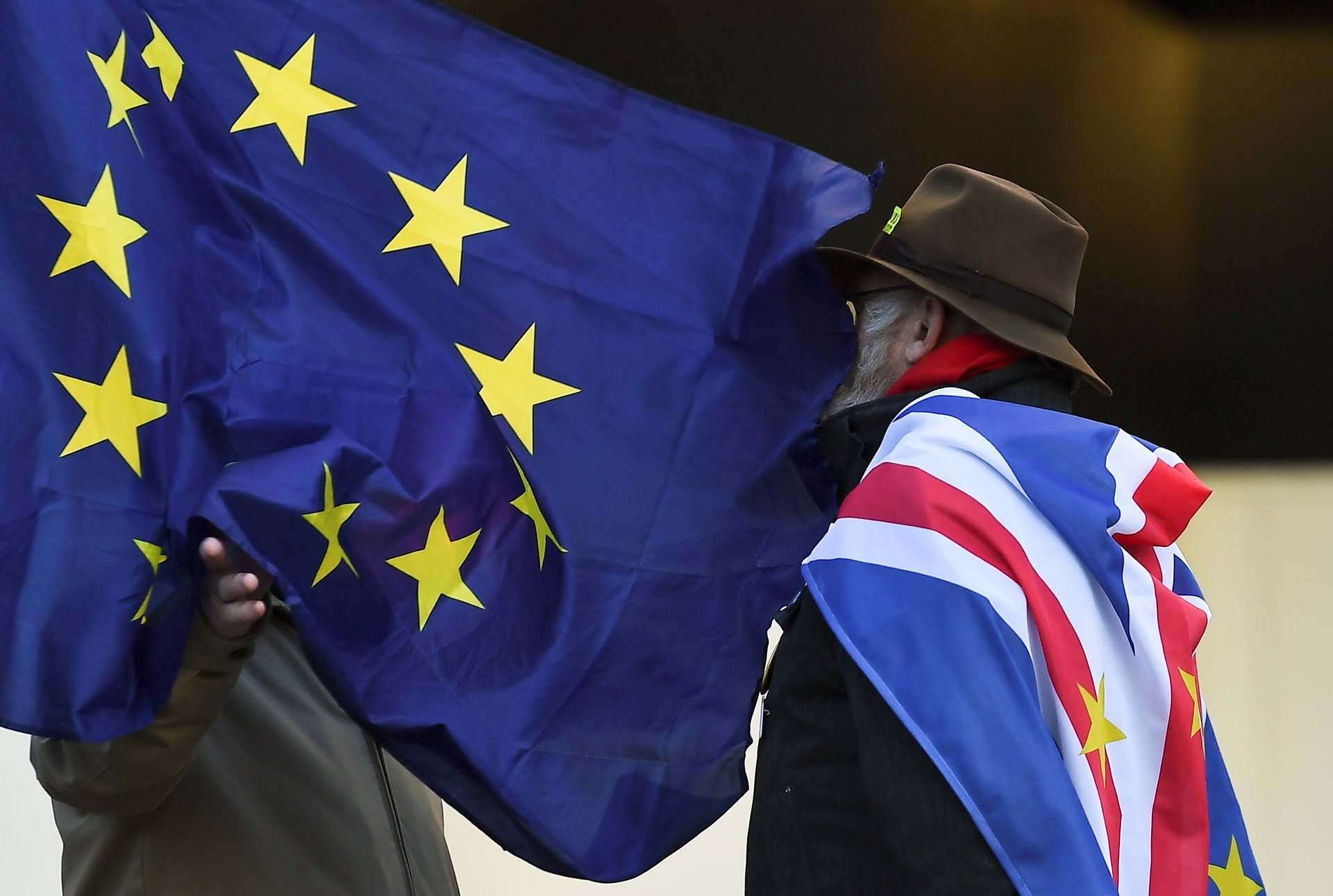Theresa May’s Brexit “Plan B” was more like a repeat of Plan A
Anyone concerned about the mounting uncertainty over Brexit may have hoped for a substantial update from British prime minister Theresa May today, in the wake of the UK parliament rejecting her deal to exit the EU last week. What they got felt more like déjà vu.


Anyone concerned about the mounting uncertainty over Brexit may have hoped for a substantial update from British prime minister Theresa May today, in the wake of the UK parliament rejecting her deal to exit the EU last week. What they got felt more like déjà vu.
May was required by today to lay out a so-called Brexit “Plan B” after her withdrawal proposal was voted down by a historic margin of 230 votes. Her statement had a promising start. After meeting with members of parliament from various parties, May said it was “clear the government’s approach had to change. And it has.”
Yet, by the time the statement ended, it was unclear how.
May stood firm on several points she has previously made. While she reiterated her view that a no-deal Brexit should be avoided, she declined to rule it out as a possibility, something she’s been requested to do by Labour opposition leader Jeremy Corbyn and other parliamentarians. Instead, she stressed that passing a withdrawal agreement was the best way to avoid such an outcome.
May also once again dismissed the idea of asking the EU for an extension to Brexit, which is scheduled for March 29, saying that it was unlikely to agree to such a request. (The Guardian previously reported that the EU was willing to give London a “technical” extension until July.) She also ruled out a second referendum, which would ask the British people to vote again on Brexit, saying it would set a difficult precedent and create issues related to social cohesion.
Perhaps the biggest news from the speech was that the government will no longer ask Europeans living in the UK to pay a £65 ($83) fee to register to remain in the country following Brexit.
So, what next? May said she would now work on more inclusive talks with MPs, and then the EU, on the most contentious aspect of the deal: the Irish backstop. This key part of the negotiations seeks to prevent a hard border between the Republic of Ireland, an EU member state, and Northern Ireland, which is part of the UK. The proposal of how to do so—keeping the UK in the EU customs union until a free-trade deal is negotiated—has proved unpalatable to UK politicians.
It’s unclear what further talks with the EU can achieve. The bloc has repeatedly said it can only offer further clarifications, and not renegotiations, to May’s Brexit agreement and in particular the issue of the backstop.
On Jan. 29, the UK parliament will also likely vote on a series of amendments to the deal proposed by MPs, such as an extension to the withdrawal process and more parliamentary powers to block a no-deal exit. The votes will be non-binding, but will serve as a test for any changes that May might consider. A second, binding parliamentary vote on any Brexit deal is not expected until February.
Expectations that May deliver a substantive Brexit plan B were hoisted upon May by parliament, meaning she was within her rights to use today’s opportunity to repeat her main goals around Brexit—seeking agreement on a deal.
Still, observers might not have been remiss to agree with Corbyn when he quipped: “This really does feel like Groundhog Day.”